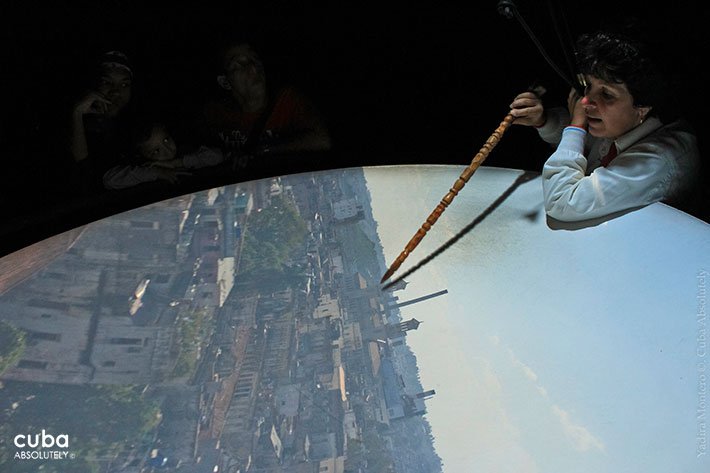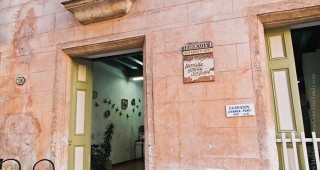
Located on the top floor of the eclectic-style early 20th-century Edificio Gómez Vila—the plaza’s tallest building (35 meters/115 feet)—on the northeast corner, the Cámara Oscura provides a 360-degree panoramic view of much of Old Havana in real time, projected at 30X magnification through a peephole camera onto a pitch-dark screen.
It was a gift from the Council of Cadiz, Spain, to the City Historian’s Office. The Cámara Oscura was invented by Leonardo da Vinci invention. Havnaa’st is the only one of its kind in Latin America and the Caribbean, and is one of 74 worldwide today. It is best seen on clear, cloudless days.
The Camera Obscura: Havana within a giant camera
By Aimara Fernández
Most modern reproducers of life, even including the camera, really repudiate it. We gulp down evil, choke at good.
Wallace Stevens
Photography is a tool to deal with things that everyone knows but to which nobody pays attention.
Emmet Gowin
The camera is a fluid way of encountering that other reality.
Jerry N. Uelsmann
Located on the top floor of the eclectic early 20th-century Gómez Vila Building, 35 meters (115 feet) off the ground, the Cámara Oscura provides a 360-degree panoramic view of much of Old Havana. It is a gift from the Council of Cadiz, Spain, through the City Historian’s Office. It is the only one of its kind in Latin America and the Caribbean, and is one of 74 worldwide today. It is best seen on clear, cloudless days.
Its operation is based on the principles of light reflection through the use of two lenses and a mirror located on a periscope. The image that is captured by the periscope is projected on a concave platform 1.8 m in diameter, located inside a dark room. The ambient light during the projection contributes to obtain sharp images and is therefore best seen on clear, cloudless days.
In its rotation, this great lens is able to capture beautiful and unusual city scenes, which as passive bystanders we are often unaware of–rooftops, domes, towers, balconies, plazas; people walking up and down busy streets, or hanging out the washing; kids playing in parks and gardens; visitors discovering the intimacies of the city; treetops, the sea, the sky; fishermen and lovers, too, at Havana’s emblematic seawall, the Malecón.
Discovering new angles to our city is a rewarding experience. The bird’s eye view from the camera obscura helps us to understand better the effort of the City Historian’s Office in the preservation of our architecture, our environment, and our history in a city that has keptintact its traditional urban fabric, its spirit and cultural identity.
Admission details: CUC 2 (incl. English-speaking guide), free under-12s








 Eclectic
Eclectic




